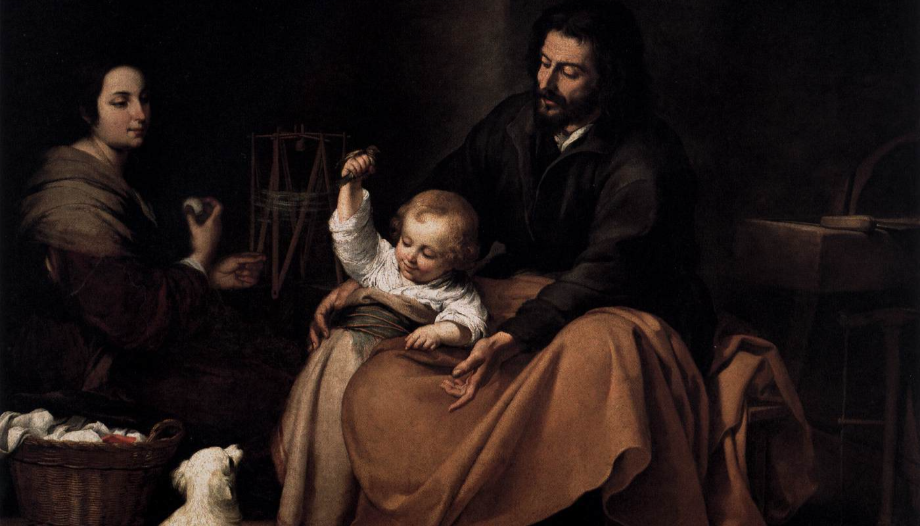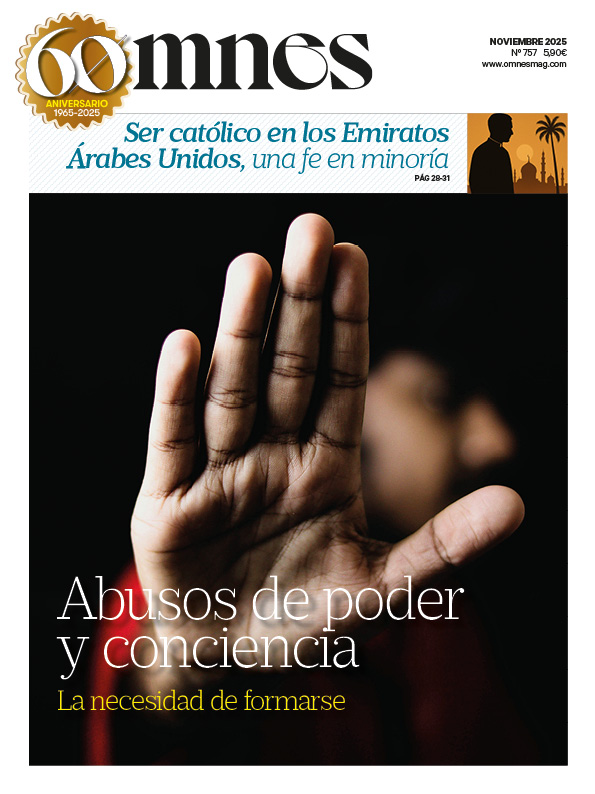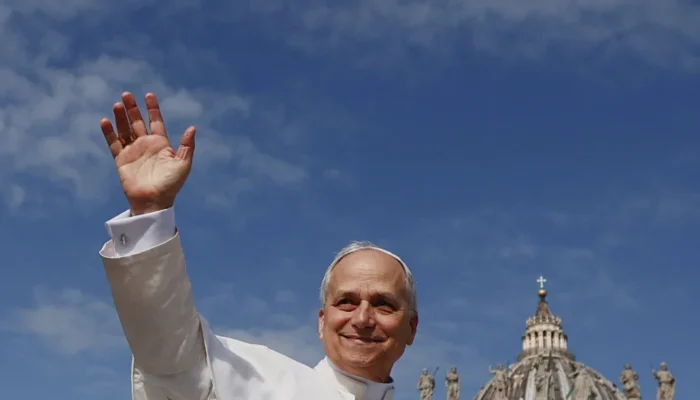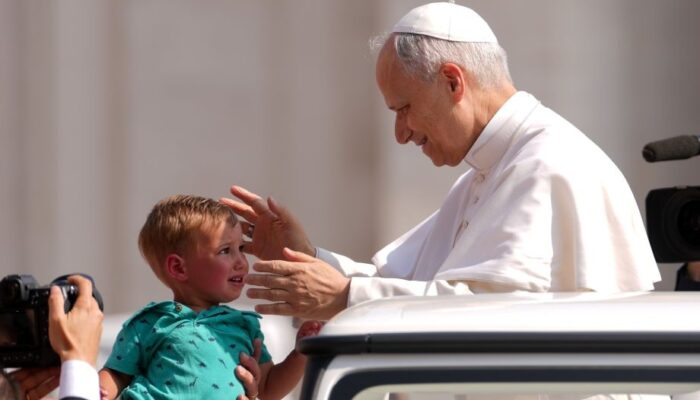J.S. Bach, Cantata BWV 61, Nun komm, der Heiden Heiland
The celebration of the first Sunday of Advent of 1714 was the occasion that moved Johann Sebastian Bach (1685-1750) to compose the cantata that bears the number 61 in his catalog of works, and whose title (taken from the first phrase of its text, as in all Bach's cantatas) is Nun komm, der Heiden Heiland ("Come now, Savior of the nations"). This is the first verse of a very popular hymn in the Lutheran liturgy, which in turn is based on the German translation of the Gregorian hymn Veni Redemptor gentiumwhich tradition attributes to St. Ambrose.
At that time the German genius, having completed his stages in Mühlhausen and Arnstadt, was serving as a composer at the court of Weimar, where he was employed as a Konzertmeister of the Protestant dukes Wilhelm Ernst and Ernest Augustus of Saxe-Weimar. As such, he was obliged to compose one cantata a month for religious celebrations, where the music-loving dukes wanted the best possible music for divine worship.
Bach Cantatas
They certainly succeeded with this cantata, since the beginning of Advent was a liturgical moment in which music had special importance. The other three Sundays of Advent were usually celebrated in Lutheran churches with simpler compositions, awaiting the musical splendor of Christmas. This explains why up to three cantatas written by Bach for the first Sunday of Advent are preserved.
The first is the one we are dealing with, belonging to his first year in Weimar, and therefore with a certain character of premiere of the new Konzertmeister in the new liturgical year. The other two were composed in 1724 (BWV 62, already in his second year as Cantor of St. Thomas in Leipzig) and in 1731 (the cantata BWV 36). All three express musically the content of the biblical readings that were read that day: the entry of Jesus as Davidic King into Jerusalem (Matthew 21:1-9) and the exhortation to be awake (Romans 13:11-14).
For his first Advent cantata in Weimar, Bach has a fairly small musical staff: three vocal soloists (tenor soprano and bass), a small four-voice choir and the usual baroque string ensemble with basso continuo. The economy of means, convenient in view of the great musical investment that would be required for the approaching Christmas season, does not prevent the result from being brilliant, since in this cantata Bach's talent as a dramatist and his genius as a composer, which is already shown in a mature and consolidated style, are especially noticeable.
The King's entry into his Court
This cantata begins, in fact, with a gesture of remarkable dramatic character, since the opening chorus that we expect to find in a cantata is presented no more and no less than over an overture in the style of French opera. Since the end of the 17th century, the operas performed at the Versailles court of Louis XIV, and later in those of almost all of Europe, begin with a three-part overture that is performed with the entrance of the King.
The first part is a solemn march, which announces the coming of the monarch to the theater, the next is a fast fugato section that energizes the king's presence, and the third is a repetition of the initial march to indicate that the performance begins. Well, Advent being the time to await the arrival of the King, Bach designs the opening chorus with the scheme of the French overture, with an intention that any of his educated listeners in Weimar would obviously perceive.
In the opening march, the choir sings voice for voice the first verse of the hymn that gives the cantata its title ("Come now, Savior of the nations"); then the four voices sing the second verse in unison ("show the Virgin Born"). It is followed by a quick and lively choral fugue in which the choir sings the third verse ("may the whole world admire him"). Finally, the initial march is repeated as the choir in unison repeats the choral melody singing the fourth verse ("for God has arranged such a birth"). The Son of God, and of the Virgin, is about to enter as Savior King into his Court, where all the nations of the earth are gathered.
Announcement and faith
In Bach's mature cantatas (those corresponding to his Weimar period, and even more so those composed in Leipzig), the initial chorus is followed by a succession of recitatives and arias. The former, with a simple accompaniment, usually serve the solo voice to announce and expound the content of the faith. In the latter, with a wide and careful instrumental clothing, the soloist expressively sings his faith made prayer. Although this division between the announcement (the recitative) and the faith (the aria) does not always occur, it can help us to understand and follow the spiritual path that Bach proposes in each of his cantatas.
In the case of BWV 61, the tenor announces in a recitative the faith in the Incarnation of the Savior, as the beginning and root of all his comings into this world. After a simple exposition, the cello, which until now only accompanied as a basso continuo, is wonderfully animated in the final words of the announcement: "You come and shine your light full of blessings". A new dramatic device that reminds us of the need to announce the blessed light that the Savior King will bring. The tenor then transforms his announcement into an expression of faith in the aria that follows the recitative. It is a prayer asking Jesus for protection and blessing, sung with an unstoppable jig rhythm (a very lively dance that used to be danced at weddings and popular festivities) that evokes the joy of love and faith in the Savior.
The Word and the music
After this choreography of faith, Bach hits us with a new dramatic gesture. A recitative in a minor key entrusted to the bass, which represents the Vox Christibursts against a background of strings in pizzicato. The minor color evokes the darkness and the night, the pizzicato which plucks the strings of the instruments, suggests the sharp knock of someone knocking on a door. The contrast with the previous aria could not be more dramatic, thus preparing the listener to pay attention to the words of this recitative, which announces the presence of Jesus at the door of every believer with the same words of the Apocalypse: "Behold, I stand at the door and knock..." (Revelation 3:20).
With this harsh change of tone, the spiritual journey of this cantata leads us from the coming of the King to the actual presence of Christ knocking at the door of every heart. Before this announcement, the believing heart intones a song of welcome in faith to the God who calls us. This is what the soprano does in the aria that follows this imposing recitative. An aria of sweetness and intimacy, where faith meditates in its melody over a simple cello accompaniment, where one responds to the call of the Savior ("Open, heart, wide open, for Jesus is coming and is going to enter").
The soprano sings open on a figure of three ascending notes that the cello will recall throughout the aria, in which, indeed, the heart rises; however, when the soprano sings the last verse ("Oh, how happy I shall be!") the cello makes a rippling stream of eighth notes flow, which seem to evoke the sea of happiness received by the heart that has listened awake to the call of the King who knocks at the door and has been able to open itself to Him. Once again, the Word of God finds in Bach's music an admirable reflection.
To end the cantata, Bach does not resort to the austere final chorale that will be de rigueur in the Leipzig cantatas, but composes a brief but lively choral fantasy. Voices and instruments express the joy and lively expectation contained in the text that closes the cantata ("Amen, amen! Come, beautiful crown of joy, do not delay! I eagerly await you").
The spiritual path has led us from the solemn proclamation of the King's entry into court to the musical painting of the attitudes that this awakens in the believer: joy, petition, availability, surrender and certain hope. Those who listened in the chapel of the ducal court of Weimar to the cantata with which Bach premiered his musical production for Advent, would probably experience some of these attitudes thanks to the suggestive spiritual force of its author. Possibly also today it will continue to awaken in the hearts of many listeners these attitudes that the arrival of Advent proposes to us. It can be verified by listening to this carefully chosen version of the Netherlands Bach Societywhich includes English subtitles to enjoy the music and the words at the same time.
Doctor of Theology








